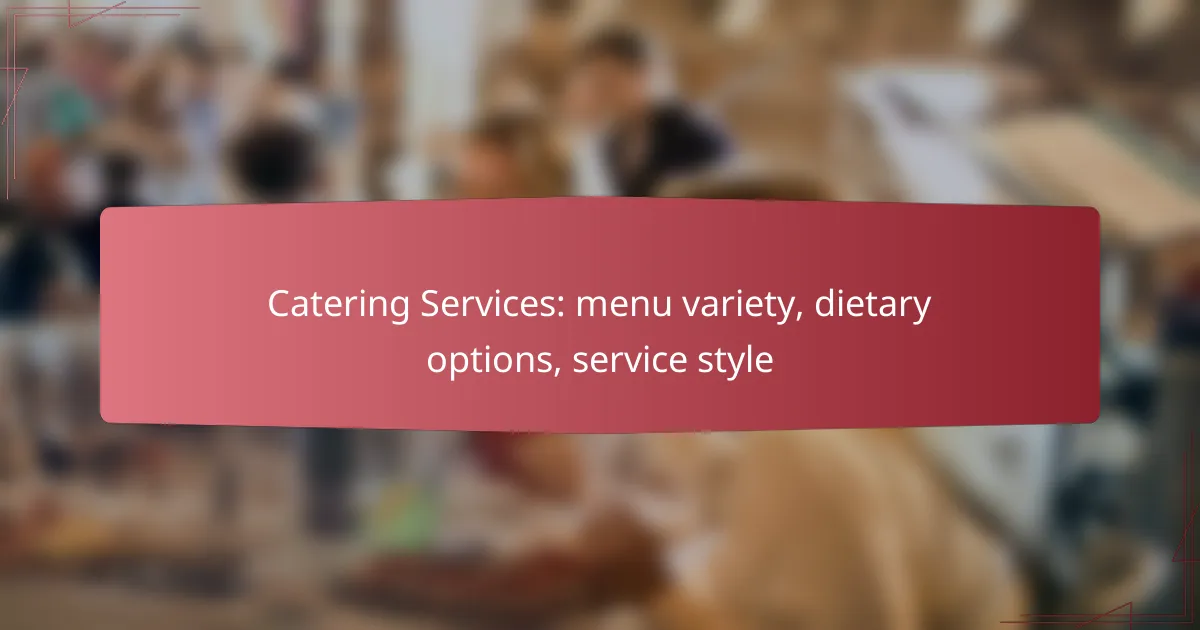London boasts a rich tapestry of entertainment options, ensuring that every visitor finds something to suit their taste. With performances ranging from live music and theatre to engaging street acts, the city offers experiences that vary in duration and audience interaction, creating memorable moments for all. Whether you’re drawn to the energy of a concert or the intimacy of a comedy show, London’s vibrant scene invites you to be part of the action.
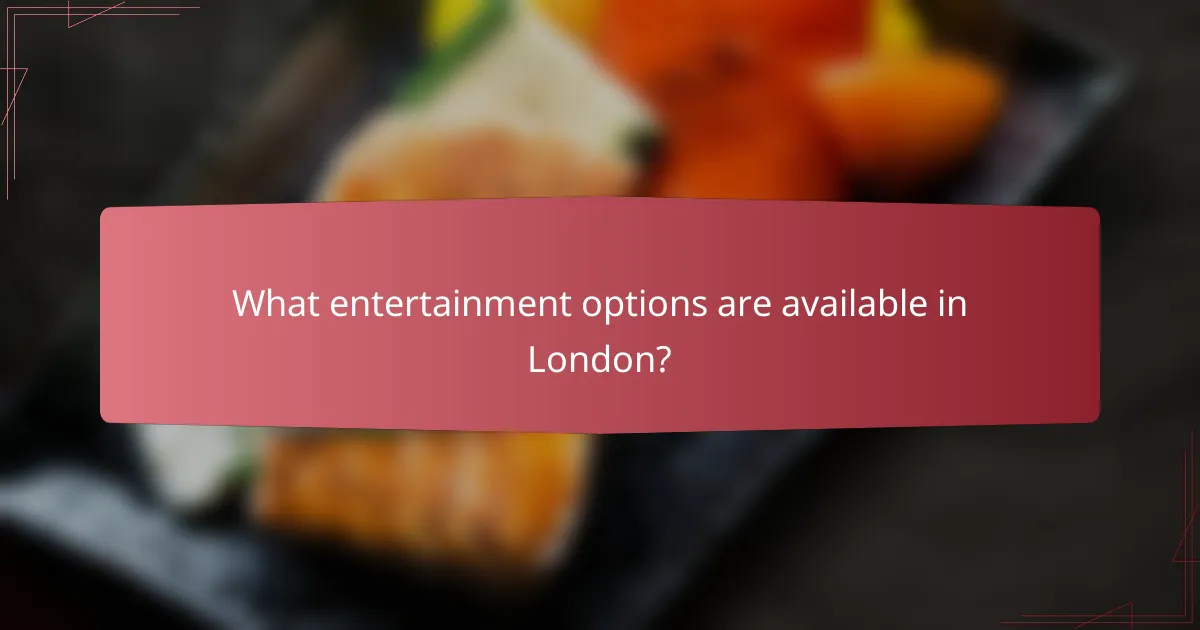
What entertainment options are available in London?
London offers a diverse range of entertainment options, catering to various tastes and preferences. From live music and theatre to street performances, there is something for everyone to enjoy in this vibrant city.
Live music performances
Live music performances in London encompass a wide array of genres, including rock, jazz, classical, and electronic. Venues range from intimate pubs to large arenas, hosting both emerging artists and established stars. Tickets can vary significantly in price, often starting from around £10 for smaller gigs to over £100 for major concerts.
Consider checking platforms like Songkick or Bandsintown to discover upcoming shows and secure tickets in advance. Popular areas for live music include Camden, Shoreditch, and Soho, where you can find a lively atmosphere and a variety of acts.
Theatre shows
Theatre shows are a cornerstone of London’s entertainment scene, with the West End being renowned for its high-quality productions. From classic plays to modern musicals, there are performances to suit every taste. Ticket prices can range from approximately £20 for less popular shows to several hundred pounds for premium seats at blockbuster productions.
To get the best deals, consider attending weekday performances or checking for last-minute tickets at the TKTS booth in Leicester Square. Additionally, many theatres offer discounts for students and seniors, making it accessible for a wider audience.
Comedy nights
Comedy nights in London provide a fun and engaging way to spend an evening, with numerous venues hosting stand-up acts and improv shows. Popular spots include The Comedy Store and The 99 Club, where you can find both established comedians and up-and-coming talent. Ticket prices typically range from £10 to £30, depending on the venue and the lineup.
For a unique experience, look for open mic nights where local comedians test new material. These events often have lower entry fees and can lead to discovering fresh comedic voices.
Street performers
Street performers, or buskers, are a vibrant part of London’s entertainment landscape, showcasing talents such as musicians, magicians, and dancers. You can find them in popular areas like Covent Garden, Southbank, and Leicester Square. While there is no admission fee, it’s customary to tip performers if you enjoy their act.
Street performances typically occur during peak tourist hours, especially on weekends. Keep an eye out for signs indicating scheduled shows, as some performers may have specific times for their acts.
Dance performances
Dance performances in London range from classical ballet to contemporary dance, with venues like the Royal Opera House and Sadler’s Wells hosting a variety of productions. Ticket prices can vary widely, starting from around £15 for less popular shows to over £100 for premium seats at major events.
To explore different styles, consider attending festivals or community dance events, which often feature local talent and are more affordable. Many venues also offer discounted tickets for students and groups, making dance accessible to a broader audience.
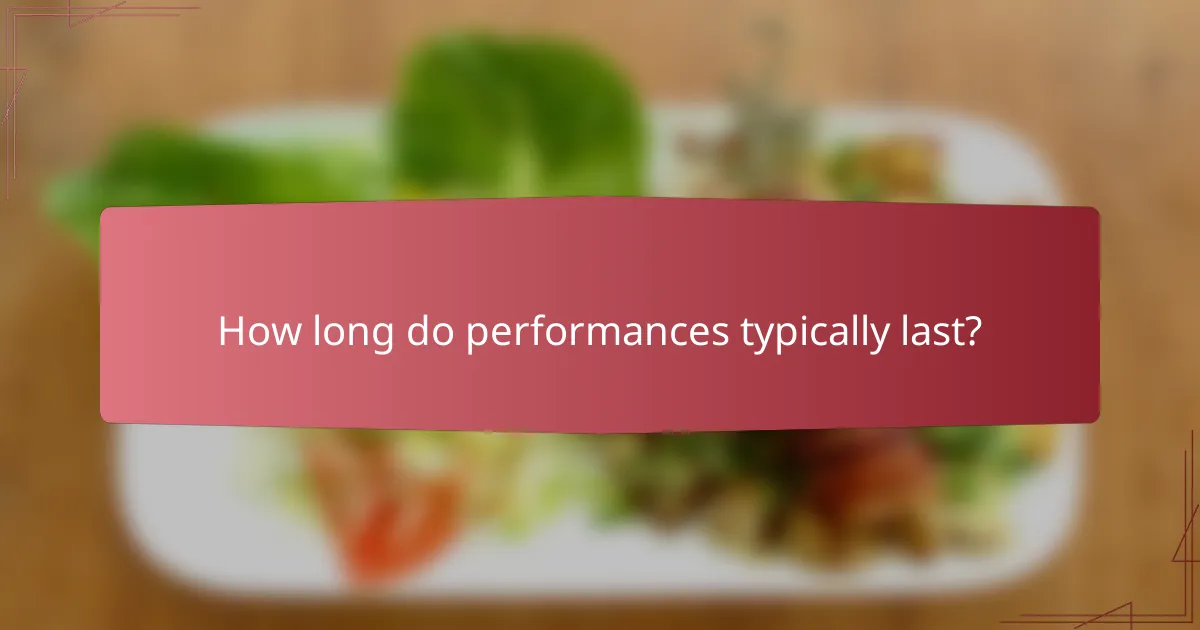
How long do performances typically last?
Performances vary widely in duration depending on the type of entertainment. Generally, audiences can expect concerts to last a few hours, while theatre and comedy shows typically range from one to three hours.
Concerts: 2-3 hours
Concerts usually last between two to three hours, including intermissions. The length can depend on the artist’s setlist and whether they include opening acts. Major music festivals may feature multiple artists, extending the total duration significantly.
When attending a concert, it’s wise to arrive early to secure good seating and enjoy any pre-show activities. Be prepared for a lively atmosphere, as audience engagement is often high during these events.
Theatre: 1.5-3 hours
Theatre performances typically run from one and a half to three hours, including intermissions. The duration can vary based on the play’s complexity and the director’s choices. For example, musicals may take longer due to additional musical numbers.
It’s important to check the specific show’s runtime when purchasing tickets, as some productions may have unique scheduling. Engaging with the story and characters is a key part of the theatre experience, so consider arriving early to soak in the ambiance.
Comedy: 1-2 hours
Comedy shows generally last between one to two hours, with many stand-up performances falling closer to the shorter end of that range. The length can vary based on the comedian’s style and whether there are multiple acts in the lineup.
For a better experience, check if the venue has a two-drink minimum or other requirements, as this can affect your overall time and budget. Engaging with the comedian through laughter and reactions enhances the live experience, making it more enjoyable for everyone involved.

How do performers engage with the audience?
Performers engage with the audience through various interactive methods that enhance the overall experience. These methods can create a dynamic atmosphere, allowing the audience to feel more connected and involved in the performance.
Interactive Q&A sessions
Interactive Q&A sessions allow the audience to ask questions directly to the performers, fostering a dialogue that can deepen engagement. These sessions typically occur after a performance or during a dedicated segment, providing an opportunity for the audience to learn more about the performers’ work and perspectives.
To conduct effective Q&A sessions, performers should encourage questions that spark discussion and be prepared to share insights about their craft. Keeping the session to a manageable duration, such as 15-30 minutes, can maintain energy and interest.
Audience participation activities
Audience participation activities invite attendees to take part in the performance, enhancing their connection to the event. This can include sing-alongs, dance-offs, or even on-stage roles, depending on the type of performance.
When planning these activities, consider the audience’s comfort level and the performance’s context. For example, a comedy show may benefit from light-hearted audience interactions, while a dramatic play might limit participation to maintain its tone.
Social media engagement
Social media engagement allows performers to connect with their audience beyond the event itself. By sharing behind-the-scenes content, live updates, or engaging posts, performers can build a community and keep the conversation alive.
To maximize social media engagement, performers should encourage audience members to share their experiences using specific hashtags. Regularly interacting with followers through comments or live streams can also strengthen these connections and foster loyalty.
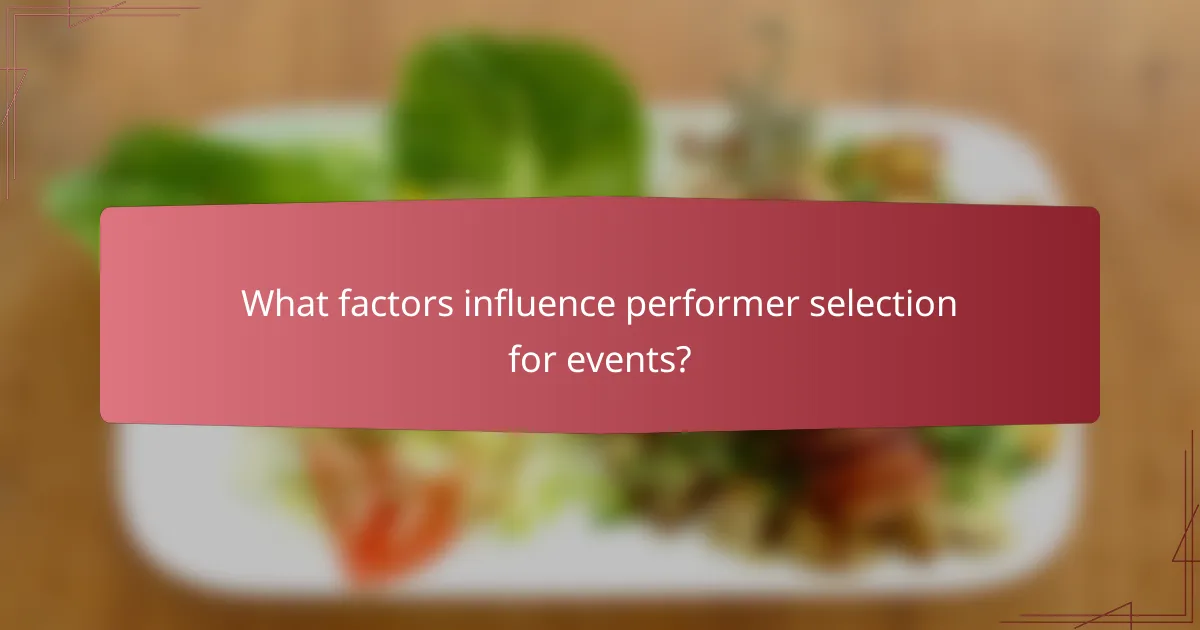
What factors influence performer selection for events?
Several key factors influence the selection of performers for events, including the type and theme of the event, the demographics of the audience, and the available budget. Understanding these elements helps ensure that the chosen performers align with the event’s goals and audience expectations.
Event type and theme
The type and theme of an event play a crucial role in determining the appropriate performers. For instance, a corporate gala may require a formal band or a keynote speaker, while a festival might be better suited for a lively DJ or a dance troupe. Aligning the performer’s style with the event’s theme enhances the overall experience.
Consider the atmosphere you want to create. For example, a wedding might benefit from a romantic acoustic guitarist, while a charity event could feature a motivational speaker to inspire attendees. Tailoring the performer to the event type ensures a cohesive experience.
Audience demographics
Understanding the demographics of your audience is essential for selecting the right performers. Factors such as age, cultural background, and interests can significantly influence what type of entertainment will resonate. For example, a younger audience may prefer contemporary music acts, while an older crowd might enjoy classic rock or jazz.
Engaging with the audience’s preferences can enhance participation and enjoyment. Surveys or feedback from previous events can provide valuable insights into what performers might appeal to your specific audience demographic.
Budget constraints
Budget constraints are a critical factor in performer selection. The cost of hiring performers can vary widely, from local artists charging a few hundred dollars to well-known headliners demanding tens of thousands. Establishing a clear budget early on helps narrow down options and avoid overspending.
When planning your budget, consider not only the performer’s fee but also additional costs such as travel, accommodations, and technical requirements. Prioritizing key elements can help you make informed choices, ensuring that you get the best value for your investment while still meeting your event goals.

What are the benefits of hiring local performers?
Hiring local performers offers numerous advantages, including fostering community ties, reducing costs, and providing a distinctive cultural experience. These benefits make local talent an appealing choice for events and gatherings.
Community connection
Engaging local performers strengthens community bonds by showcasing homegrown talent. This connection fosters a sense of pride and belonging among attendees, as they support artists from their own area.
Local performers often have a deep understanding of the community’s culture and values, allowing them to create performances that resonate with the audience. This connection can enhance the overall experience, making events more memorable.
Cost-effectiveness
Hiring local performers can be more budget-friendly compared to bringing in talent from afar. Travel expenses, accommodation, and logistics can quickly add up, making local options a more economical choice.
Additionally, local artists may offer flexible pricing structures or be open to negotiating fees, especially for community events. This can help organizations stay within budget while still providing quality entertainment.
Unique local flavor
Local performers bring a unique flavor to events, often incorporating regional styles, traditions, and themes into their acts. This authenticity can enrich the audience’s experience and create a distinctive atmosphere.
For example, a local band might perform traditional folk music, while a dance troupe could showcase regional dance styles. These elements not only entertain but also educate attendees about the local culture.
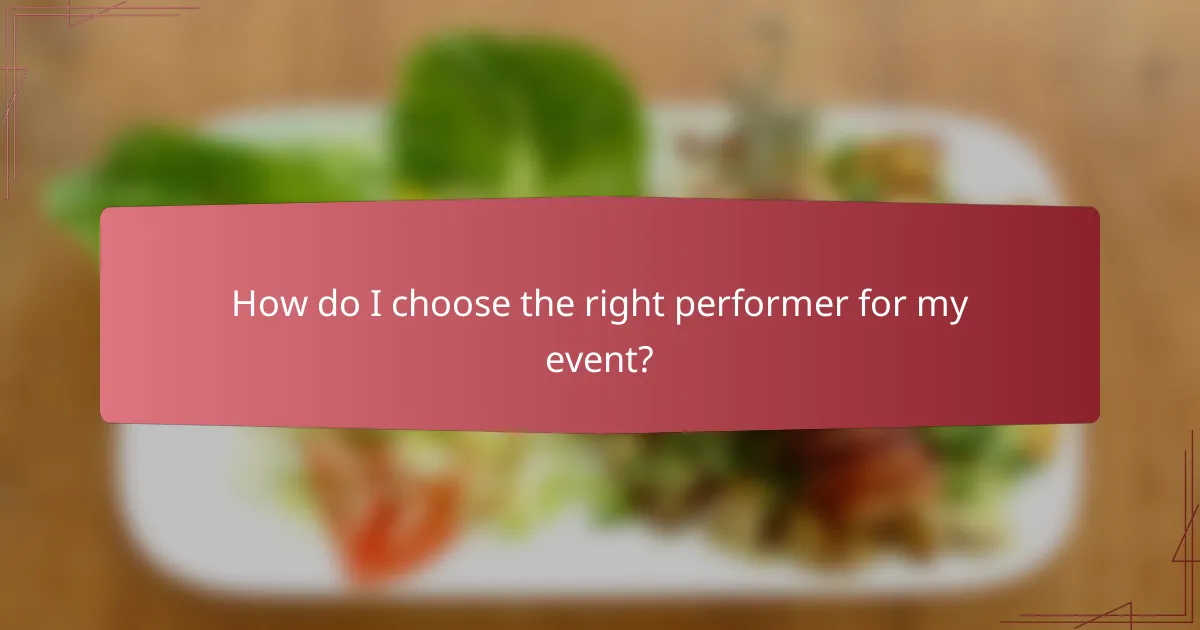
How do I choose the right performer for my event?
Choosing the right performer for your event involves understanding your event’s goals, the audience’s preferences, and the type of performance that aligns with those factors. Consider the atmosphere you want to create and how the performer can engage your attendees effectively.
Define event goals
Start by clarifying what you want to achieve with your event. Are you aiming to entertain, educate, or inspire your audience? Defining these goals will help you select a performer whose skills and style match your vision.
For example, if your goal is to create a lively atmosphere at a corporate party, a band or DJ may be suitable. Conversely, for a conference, a keynote speaker or workshop facilitator might be more appropriate.
Consider the duration of the event as well. Performers typically have different engagement styles depending on whether they are performing for a short set or a longer period. Aligning the performer’s capabilities with your event’s timeline is crucial for success.



